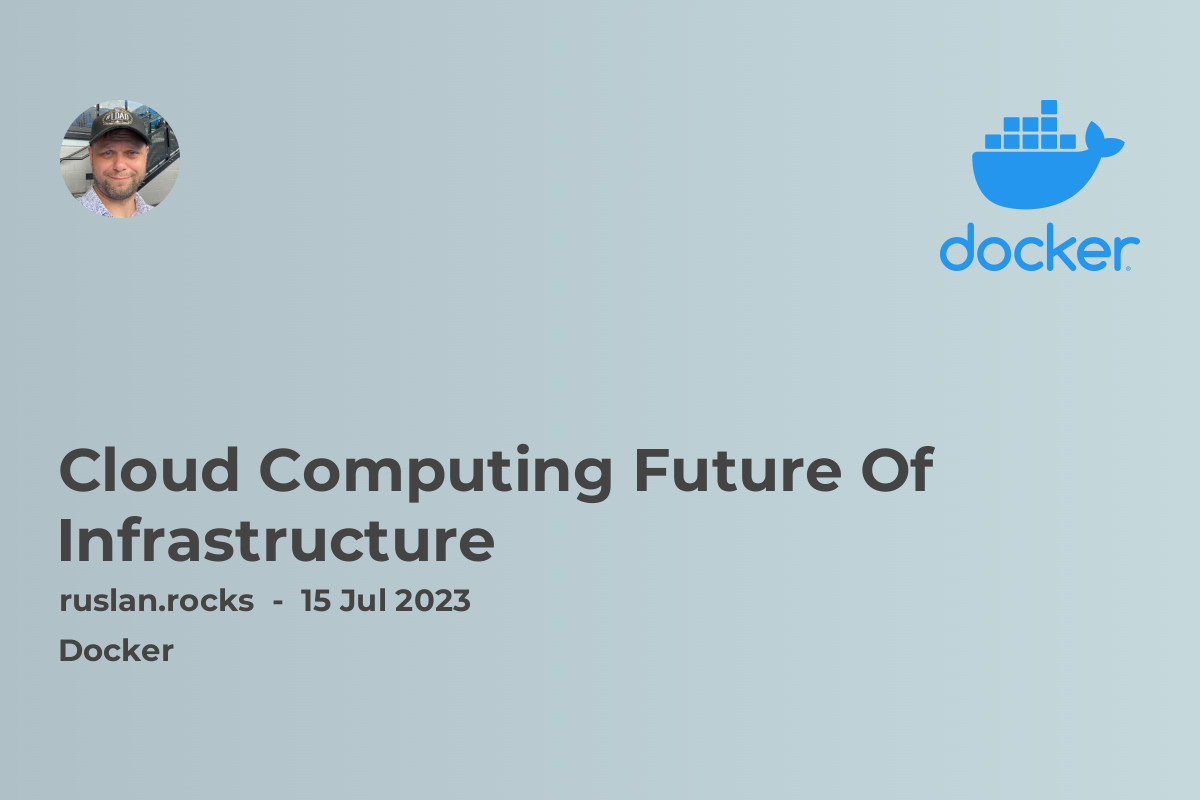
Cloud computing is revolutionizing the way businesses manage their infrastructure. It promises cost efficiency, scalability, and flexibility, making it the future of infrastructure. In this article, we will explore the various aspects of cloud computing and its potential for shaping the future.
What is Cloud Computing?
Cloud computing refers to the delivery of computing resources over the internet. Instead of owning and maintaining physical servers and infrastructure, businesses can access software, storage, and other computing resources on-demand through cloud service providers.
Benefits of Cloud Computing
Cloud computing offers several advantages over traditional infrastructure management:
-
Scalability: Businesses can easily scale their computing resources up or down based on their needs, allowing them to handle fluctuations in demand efficiently.
-
Cost Efficiency: Instead of investing in and maintaining expensive hardware, businesses can pay for cloud services only for the resources they use. This eliminates the need for upfront infrastructure costs and reduces ongoing maintenance expenses.
-
Flexibility: Cloud computing provides businesses with the flexibility to access their data and applications from anywhere, at any time, using any device with an internet connection.
-
Reliability: Cloud service providers typically offer high levels of reliability, with built-in redundancy and backup mechanisms. This ensures that businesses can access their data and services even in the event of hardware failures or disasters.
-
Security: Cloud service providers employ robust security measures to protect data and infrastructure. They often have dedicated teams of security experts and adhere to strict compliance standards, offering better security than what many businesses can achieve on their own.
The Future of Infrastructure
Cloud computing is transforming the way businesses approach infrastructure management, and its impact is set to grow in the future. Here are some key trends that highlight the direction in which cloud computing is headed:
1. Serverless Computing
Serverless computing is an emerging trend that allows developers to focus on writing code without having to manage servers. With serverless platforms like AWS Lambda and Google Cloud Functions, businesses can run their applications without provisioning or managing servers explicitly. This trend promises even greater flexibility and productivity gains for businesses.
2. Edge Computing
Edge computing brings computing power closer to the source of data generation, reducing latency and improving performance. It enables real-time processing and analysis of data, making it ideal for applications that require low latency or deal with a massive amount of data. With the proliferation of Internet of Things (IoT) devices, edge computing is expected to play a crucial role in handling the increasing volume of data generated at the edge.
3. Hybrid Cloud Environments
While many businesses have already adopted cloud computing, hybrid cloud environments are becoming increasingly popular. Hybrid clouds combine private and public clouds, enabling businesses to take advantage of the benefits of both. This approach allows businesses to keep sensitive data on-premises while leveraging the scalability and cost benefits of public cloud services. Hybrid cloud environments provide the flexibility and control businesses need in managing their infrastructure.
4. Artificial Intelligence and Machine Learning
Artificial Intelligence (AI) and Machine Learning (ML) are driving innovations in cloud computing. Cloud providers are investing heavily in AI and ML services, allowing businesses to leverage these technologies without having to develop complex algorithms or invest in expensive hardware. The availability of pre-trained models, data processing capabilities, and scalable infrastructure in the cloud makes it easier for businesses to harness the power of AI and ML in their applications.
Cloud computing is transforming the infrastructure landscape, offering businesses scalability, cost efficiency, flexibility, and improved security. As technologies like serverless computing, edge computing, AI, ML, and blockchain continue to mature, the future of cloud computing looks promising. Businesses that embrace cloud computing can stay ahead of the curve, adapt to changing market dynamics, and scale their operations to meet customer demands effectively.
If you want to learn more about cloud computing and related topics, check out the following articles:
-
Micro Frontends: Pros and Cons in 2023: Explore the advantages and disadvantages of adopting micro frontend architecture, a popular trend in modern web development.
-
Kubernetes vs Docker Swarm: Choose the Right Container Orchestration Tool: Understand the key differences between Kubernetes and Docker Swarm and learn which one suits your infrastructure needs better.
